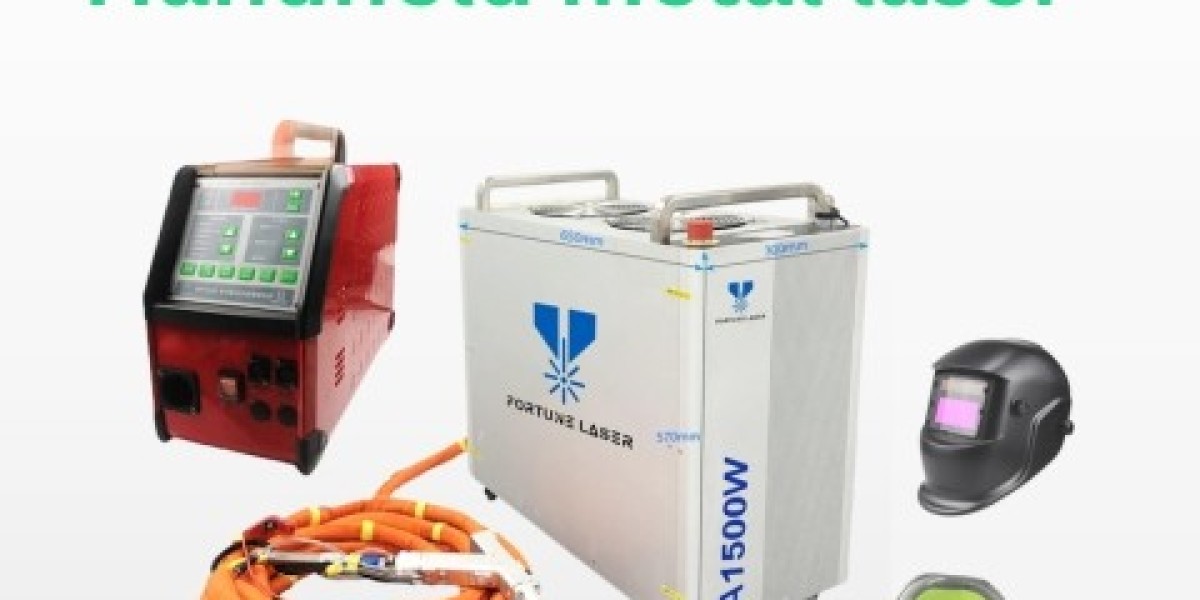How can something so compact deliver the precision, strength, and versatility demanded by complex metal projects? To truly grasp the impact of handheld metal laser, we need to explore their applications, technology, and how they fit into modern metal fabrication and repair workflows.
Understanding the Essence of Handheld Metal Lasers
At its core, a handheld metal laser is a compact laser device specifically designed to work on metal surfaces. Unlike bulky industrial laser machines that require fixed installations, these devices offer portability that empowers technicians, welders, and engineers to carry out precise work in a variety of locations—be it a manufacturing plant, on-site repair, or even remote field operations.
These lasers emit concentrated light energy that interacts with metal surfaces to perform tasks such as welding, cutting, engraving, cleaning, and marking. The precision of laser technology allows for minimal heat distortion and high accuracy, making handheld models particularly appealing for detailed or delicate metalwork.
The Technological Backbone Behind Handheld Metal Lasers
Handheld metal lasers rely on advanced optics and laser diodes or fiber laser technology to produce a beam intense enough to modify metal. Unlike traditional welding torches or mechanical tools, these lasers operate without physical contact, reducing wear and tear and contamination risks.
A crucial aspect is their ability to focus laser light onto a very small spot, enabling concentrated energy delivery. This results in clean cuts or welds with minimal surrounding material affected. The compact design is achieved through miniaturization of the laser source, cooling systems, and power supply—allowing the device to be lightweight and ergonomically designed.
Diverse Applications Across Industries
One of the most remarkable aspects of handheld metal lasers is their versatility. They are widely used across sectors such as automotive, aerospace, construction, jewelry, and even art restoration. Here are some areas where these tools shine:
Metal Repair and Maintenance: On-site repairs of heavy machinery or infrastructure can be done quickly without moving parts to specialized workshops. The precision reduces downtime and costs.
Customization and Prototyping: Designers and engineers use handheld lasers for rapid prototyping or custom metal parts, benefiting from the ability to work directly on metal sheets or components.
Surface Preparation: Cleaning metal surfaces before painting or coating is simplified, removing rust, oxides, and contaminants without abrasives or chemicals.
Engraving and Marking: The precision allows for intricate designs, serial numbers, and branding to be applied permanently and cleanly on metals of all types.
Why Portability Matters
The handheld format breaks away from the limitations imposed by stationary laser systems. Being able to carry the laser directly to the workpiece means that repairs or modifications happen faster and often more precisely, without risk of damage during transport. This flexibility allows professionals to respond promptly to urgent repairs, perform quality control inspections, or adjust components on the fly.
Moreover, the portability encourages innovation by lowering barriers to laser technology adoption in smaller workshops or emerging markets where space and budget constraints exist.
Safety and Usability Considerations
Operating a handheld metal laser requires training and safety awareness because of the high-intensity light beam. However, manufacturers often incorporate features that protect users, such as automatic shut-off sensors, beam shielding, and ergonomic handles that improve control.
Ease of use is also emphasized with intuitive controls, digital interfaces, and adjustable settings that cater to different metals and thicknesses. This means operators can fine-tune parameters for optimal results without complicated setup or extensive trial and error.
Integration With Digital Workflows
Many handheld metal lasers today come equipped with or can be paired with digital systems for design input, monitoring, and process control. This integration allows seamless transition from CAD drawings to real-world execution, ensuring consistency and repeatability. Wireless connectivity and app-based control make it possible to manage tasks remotely, record data for quality assurance, and optimize workflows.
Future Trends Shaping Handheld Metal Laser Technology
The evolution of handheld metal lasers is ongoing, with manufacturers pushing the boundaries of power efficiency, beam quality, and device durability. Innovations such as improved battery technology and enhanced cooling systems will extend operation time and reduce downtime.
Additionally, advances in AI-driven process control (though we won't delve into AI itself) promise smarter adjustment of laser parameters, adapting in real time to changing metal conditions to maximize precision and minimize errors.
The drive towards eco-friendly manufacturing also boosts interest in handheld lasers, as they reduce waste, eliminate chemicals in surface preparation, and use energy more efficiently compared to traditional methods.
Final Thoughts
Handheld metal laser represent a remarkable fusion of power, precision, and portability. They enable professionals across diverse industries to perform metalworking tasks with an unprecedented level of control and convenience. By bringing laser technology directly to the point of need, these compact devices not only enhance efficiency but also open up new possibilities for craftsmanship and repair.
Their unique ability to deliver industrial-grade performance in a handheld package challenges long-standing norms and equips users to tackle projects that once required large, immobile equipment. Whether for rapid on-site repairs, detailed engraving, or innovative prototyping, handheld metal lasers are an indispensable tool shaping the future of metal fabrication. For anyone involved in metalwork, understanding and embracing this technology is a step toward greater precision, flexibility, and productivity.






